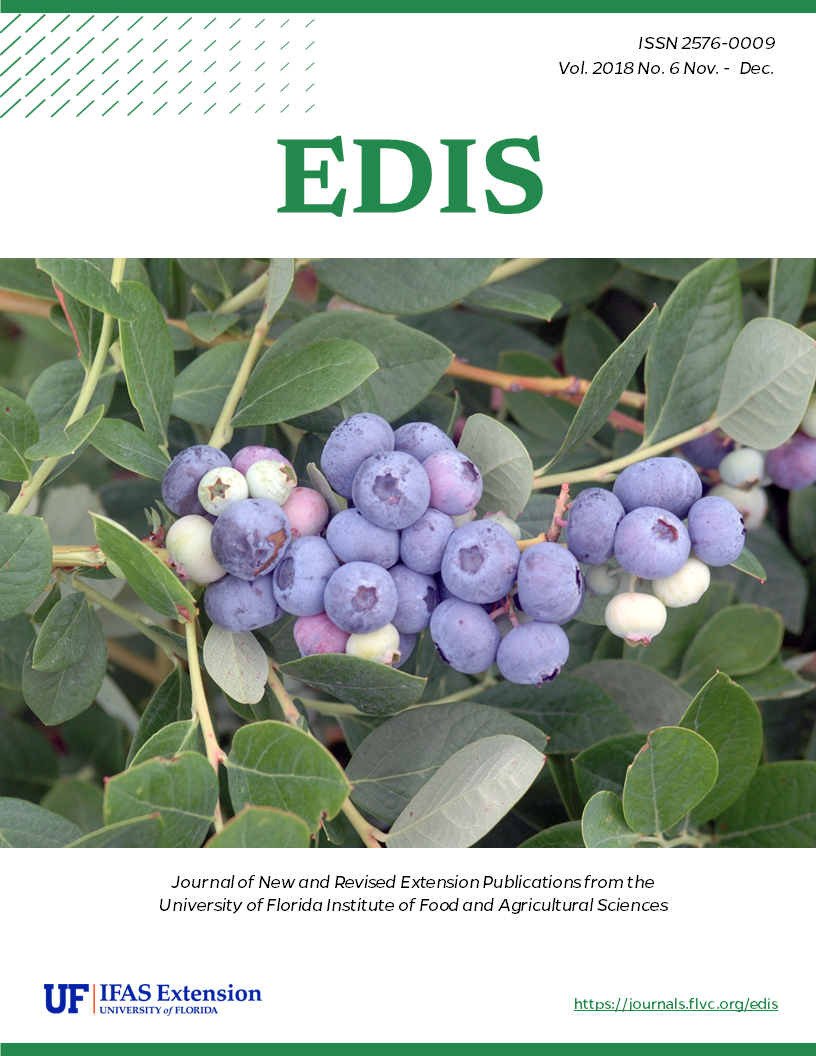Abstract
Hundreds of millions of years of geologic processes lead to the formation of Florida. This document described the 3 primary processes that created Florida as we know it today: 1) plate tectonics (>160 million years ago), 2) carbonate production (160 - 23 million years ago), and 3) siliciclastic invasion (23 million years ago – present). It also discusses the major processes that continue to reform the morphology of the Florida Platform: sea level change, karstification, and humans.
Previous Version: Allen, Ginger, and Martin Main. 2005. “Florida’s Geological History”. EDIS 2005 (7). https://journals.flvc.org/edis/article/view/114948.
References
Bryant, J. D., B. J. Macfadden, and P. A. Mueller. 1992. “Improved Chronological Resolution Of The Hawthorn And The Alum Bluff Groups In Northern Florida—Implications For Miocene Chronostratigraphy” Geological Society of America Bulletin, v. 104, p. 208–218. https://doi.org/10.1130/0016-7606(1992)104<0208:ICROTH>2.3.CO;2
Church, J. A., P. U. Clark, A. Cazenave, J. M. Gregory, S. Jevrejeva, A. Levermann, M. A. Merrifield, G. A. Milne, R. S. Nerem, P. D. Nunn, A. J. Payne, W. T. Pfeffer, D. Stammer, and A. S. Unnikrishnan. 2013. “Sea Level Change.” In: Climate Change 2013: The Physical Science Basis. Contribution of Working Group I to the Fifth Assessment Report of the Intergovernmental Panel on Climate Change. Cambridge University Press.
Daley, G. M. 2002. “Creating a paleoecological framework for evolutionary and paleoecological studies: An example from the Fort Thompson Formation (Pleistocene) of Florida.” Palaios, v. 17, p. 419–434. https://doi.org/10.1669/0883-1351(2002)017<0419:CAPFFE>2.0.CO;2
Dallmeyer, R. D., M. Caenvachette, and M. Villeneuve. 1987. “Emplacement Age Of Posttectonic Granites In Southern Guinea (West-Africa) And The Peninsular Florida Subsurface - Implications For Origins Of Southern Appalachian Exotic Terranes.” Geological Society of America Bulletin v. 99, p. 87–93. https://doi.org/10.1130/0016-7606(1987)99<87:EAOPGI>2.0.CO;2
Gardulski, A. F., M. H. Gowen, A. Milsark, S. D. Weiterman, S. W. Wise, and H. T. Mullins. 1991. “Evolution Of A Deep-Water Carbonate Platform - Upper Cretaceous To Pleistocene Sedimentary Environments On The West Florida Margin” Marine Geology. v. 101, p. 163–179. https://doi.org/10.1016/0025-3227(91)90069-G
Hine, A. C. 2013. Geologic History of Florida. University Press of Florida, v. 2.
Katz, B. G., J. S. Catches, T. D. Bullen, and R. L. Michel. 1998. “Changes in the isotopic and chemical composition of ground water resulting from a recharge pulse from a sinking stream.” Journal of Hydrology. v. 211, p. 178–207. https://doi.org/10.1016/S0022-1694(98)00236-4
Lane, E. 1994. Florida's Geologic History and Geologic Resources. Florida Geological Survey Special Publication, v. 35, p. 64.
Martin, J. B., and R. W. Dean. 2001. “Exchange of water between conduits and matrix in the Floridan aquifer.” Chemical Geology v. 179, p. 145–165. https://doi.org/10.1016/S0009-2541(01)00320-5
Martin, J. B., and E. J. Screaton. 2001. “Exchange of Matrix and Conduit Water with Examples from the Floridan Aquifer” in Kuniansky, E.L., ed., U.S. Geological Survey Karst Interest Group: Water-Resources Investigations Report, p. 38–44.
Missimer, T. M., and R. G. Maliva. 2017. “Late Miocene fluvial sediment transport from the southern Appalachian Mountains to southern Florida: An example of an old mountain belt sediment production surge” Sedimentology v. 64, p. 1846–1870. https://doi.org/10.1111/sed.12377
Palmer, A. N. 1991. “Origin And Morphology Of Limestone Caves” Geological Society of America Bulletin, v. 103, p. 1–21. https://doi.org/10.1130/0016-7606(1991)103<0001:OAMOLC>2.3.CO;2
Petuch, E. J. 1987. “The Florida Everglades—A Buried Pseudoatoll” Journal of Coastal Research v. 3, p. 189–200.
Ryan, W.B.F., S. M. Carbotte, J. O. Coplan, S. O'Hara, A. Melkonian, R. Arko, R.A. Weissel, V. Ferrini, A. Goodwillie, F. Nitsche, J. Bonczkowski, and R. Zemsky. 2009. “Global Multi-Resolution Topography synthesis” Geochemistry Geophysics Geosystems v. 10. https://doi.org/10.1029/2008GC002332
Screaton, E., J. B. Martin, B. Ginn, and L. Smith. 2004. “Conduit properties and karstification in the unconfined Floridan Aquifer” Ground Water v. 42, p. 338–346. https://doi.org/10.1111/j.1745-6584.2004.tb02682.x
Webb, S. D., B. J. Macfadden, and J. A. Baskin. 1981. “Geology And Paleontology Of The Love Bone Bed From The Late Miocene Of Florida” American Journal of Science v. 281, p. 513–544.
White, W. B. 2002. “Karst hydrology: recent developments and open questions” Engineering Geology v. 65, p. 85–105. https://doi.org/10.1016/S0013-7952(01)00116-8
Worthington, S. R. H. 1999. “A comprehensive strategy for understanding flow in carbonate aquifers” in Palmer, A.N., M. V. Palmer, and I. D. Sasowsky, eds., Karst Modeling, Volume 5: Charles Town, West Virginia, Karst Waters Institute, p. 30–37.
Unless otherwise specified, articles published in the EDIS journal after January 1, 2024 are licensed under a Creative Commons Attribution-NonCommercial-NoDerivs 4.0 International (CC BY-NC-ND 4.0) license.

